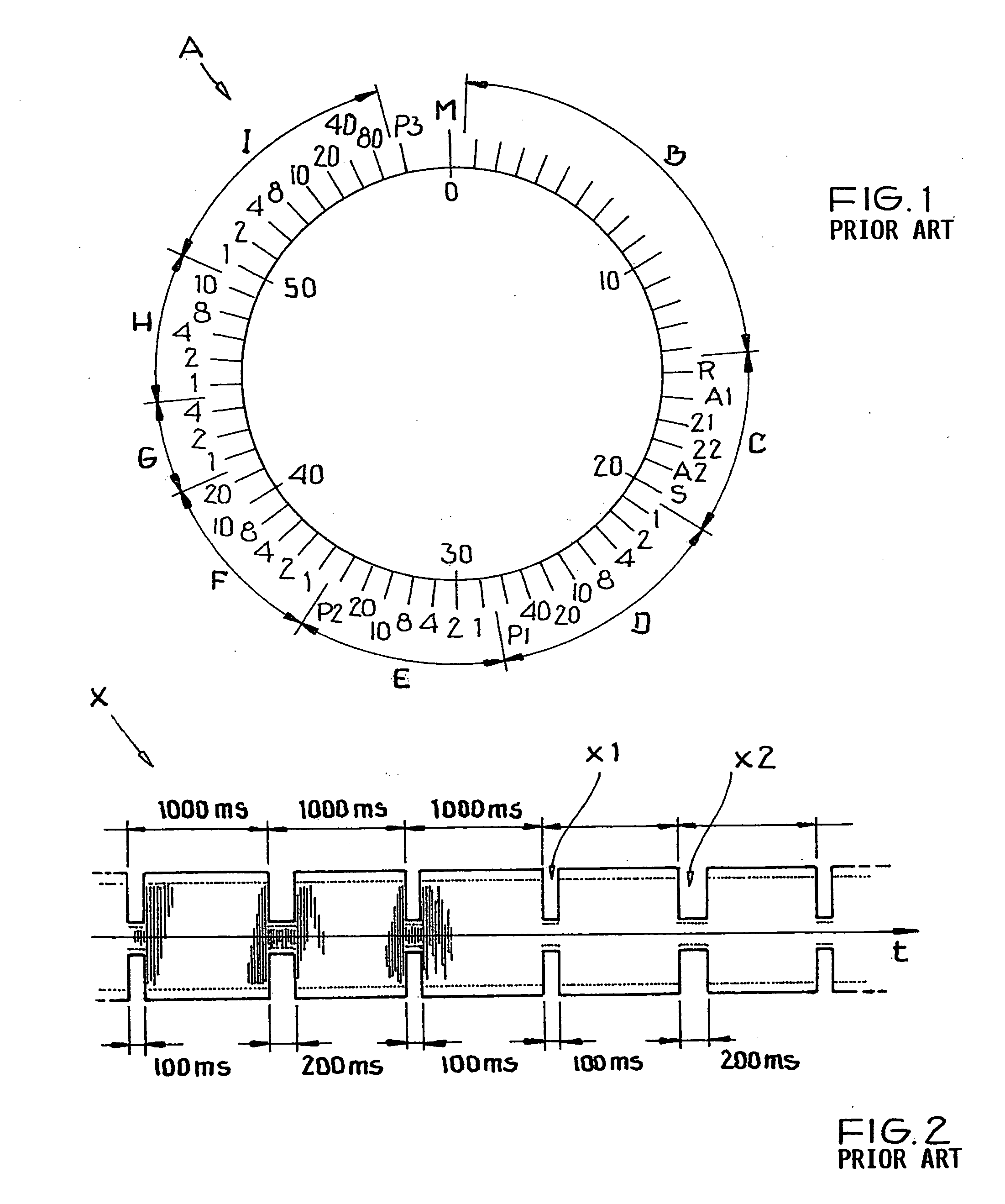Radio-controlled clock, receiver circuit and method for acquiring time information with economized receiver and microcontroller
a receiver circuit and time information technology, applied in the direction of electronic time-pieces, instruments, optics, etc., can solve the problems of large circuit size, large circuit technology, and large circuit and achieve the reduction of the chip surface area of the receiver circuit correspondingly, the effect of reducing the effort and expenditure of the receiver circui
- Summary
- Abstract
- Description
- Claims
- Application Information
AI Technical Summary
Benefits of technology
Problems solved by technology
Method used
Image
Examples
Embodiment Construction
[0064] In all of the drawing figures, the same elements and signals, as well as the elements and signals respectively having the same functions, are identified by the same reference numbers, unless the contrary is indicated.
[0065] The general format of an encoding scheme or time code telegram A as conventionally known in the time signal transmitted by the German time signal transmitter DCF-77 has been explained above in connection with FIG. 1 in the Background Information section of this specification. Also, the time-variation of the amplitude-modulated time signal is schematically shown in the time diagram of FIG. 2 as discussed above.
[0066]FIG. 3 is a significantly simplified schematic block circuit diagram of a portion of a radio-controlled clock 1 for carrying out the method according to the invention. The radio-controlled clock 1 comprises a receiving antenna 2 for receiving the time signal X transmitted from a time signal transmitter which is not shown. A receiver circuit 3 ...
PUM
 Login to View More
Login to View More Abstract
Description
Claims
Application Information
 Login to View More
Login to View More - R&D
- Intellectual Property
- Life Sciences
- Materials
- Tech Scout
- Unparalleled Data Quality
- Higher Quality Content
- 60% Fewer Hallucinations
Browse by: Latest US Patents, China's latest patents, Technical Efficacy Thesaurus, Application Domain, Technology Topic, Popular Technical Reports.
© 2025 PatSnap. All rights reserved.Legal|Privacy policy|Modern Slavery Act Transparency Statement|Sitemap|About US| Contact US: help@patsnap.com



